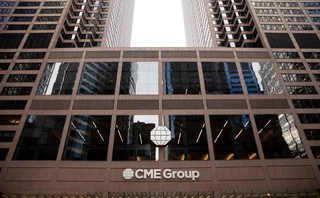
Basel Committee plans new default risk capital requirements
Consultation will explore new measures in response to credit crunch
The Basel Committee is planning to introduce a new requirement for capital to be held against default risk, in response to widespread difficulties institutions have experienced during the global credit crunch.
At the end of its October meeting, the Committee announced it “has been working to introduce new standards for banks to hold capital against the default risk associated with complex, less liquid credit products in the trading book”.
“The Committee agreed to seek public consultation on the proposed standards and to assess their impact on banks' capital requirements,” it continued.
The Committee offered no further details on the proposals or a timeframe within which it expects to commence consultation.
The announcement was not wholly unexpected. Earlier this year, the Committee initiated a review of jurisdictions' approaches to supervising and regulating funding liquidity risk, taking into account lessons learned from the recent market turbulence. The review focuses on how liquidity risk is assessed by banks and supervisors under the assumption of stressed market conditions, as well as the risks related to off-balance-sheet exposures.
Basel II has come in for criticism in recent months over the role it might or might not have played in lessening the impact of the subprime mortgage meltdown. Observers have suggested the accord has encouraged the securitisation of mortgage pools to move the holdings off balance sheet, thereby avoiding the requirement to hold capital against them, and deepening the crisis.
The Committee, however, reiterated its belief that Basel II has paid dividends for compliant institutions since the subprime crisis began and pledged to continue to watch market events intently to identify exactly what effect the accord is having.
“Committee members agree that Basel II implementation will help make the capital base more relevant to banks' changing risk profiles and that the Committee will closely monitor its impact. The framework will also serve to create incentives for better risk measurement and management, including for securitisation exposures,” the Committee concluded.
Only users who have a paid subscription or are part of a corporate subscription are able to print or copy content.
To access these options, along with all other subscription benefits, please contact info@risk.net or view our subscription options here: http://subscriptions.risk.net/subscribe
You are currently unable to print this content. Please contact info@risk.net to find out more.
You are currently unable to copy this content. Please contact info@risk.net to find out more.
Copyright Infopro Digital Limited. All rights reserved.
As outlined in our terms and conditions, https://www.infopro-digital.com/terms-and-conditions/subscriptions/ (point 2.4), printing is limited to a single copy.
If you would like to purchase additional rights please email info@risk.net
Copyright Infopro Digital Limited. All rights reserved.
You may share this content using our article tools. As outlined in our terms and conditions, https://www.infopro-digital.com/terms-and-conditions/subscriptions/ (clause 2.4), an Authorised User may only make one copy of the materials for their own personal use. You must also comply with the restrictions in clause 2.5.
If you would like to purchase additional rights please email info@risk.net
More on Risk management
Many banks ignore spectre of SVB in liquidity stress tests
In ALM Benchmarking exercise, majority of banks have no internal tests focusing on stress horizons of less than 30 days
Quant Finance Master’s Guide 2026
Risk.net’s guide to the world’s leading quant master’s programmes, with the top 25 schools ranked
ALM Benchmarking: explore the data
View interactive charts from Risk.net’s 46-bank study, covering ALM governance, balance-sheet strategy, stress-testing, technology and regulation
Staff, survival days, models – where banks split on ALM
Liquidity and rate risks are as old as banking; but the 46 banks in our benchmarking study have different ways to manage them
CME faces battle for clients after Treasuries clearing approval
Some members not ready to commit to 2026 start date; rival FICC enhances services
AI and the next era of Apac compliance
How Apac compliance leaders are preparing for the next era of AI-driven oversight
Responsible AI is about payoffs as much as principles
How one firm cut loan processing times and improved fraud detection without compromising on governance
Op risk data: Low latency, high cost for NSE
Also: Brahmbhatt fraud hits BlackRock, JP Morgan slow to shop dubious deals. Data by ORX News






